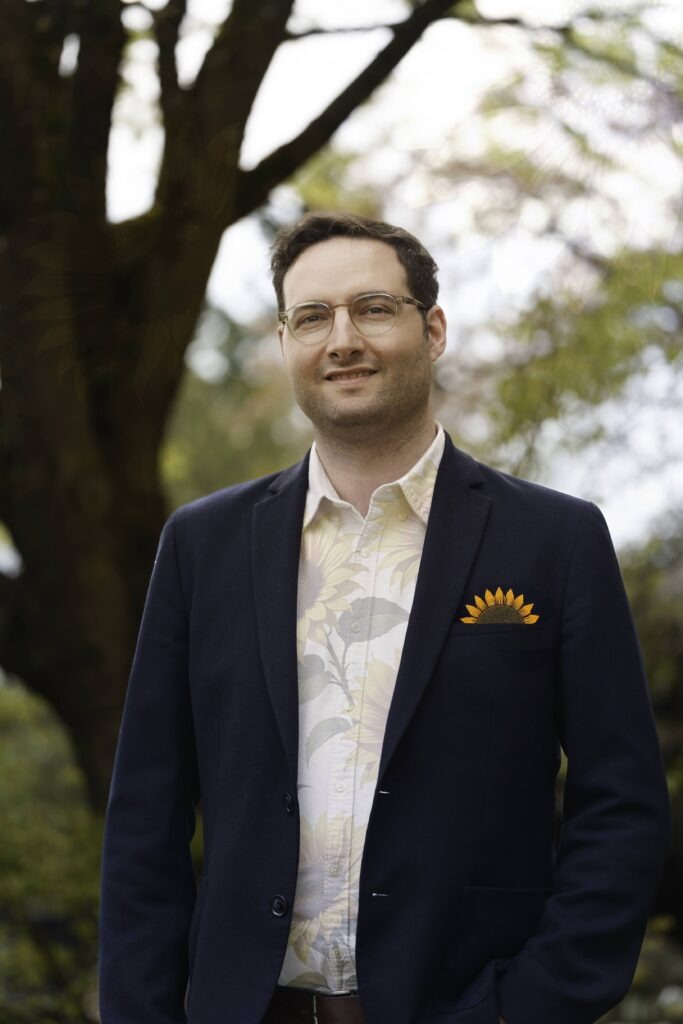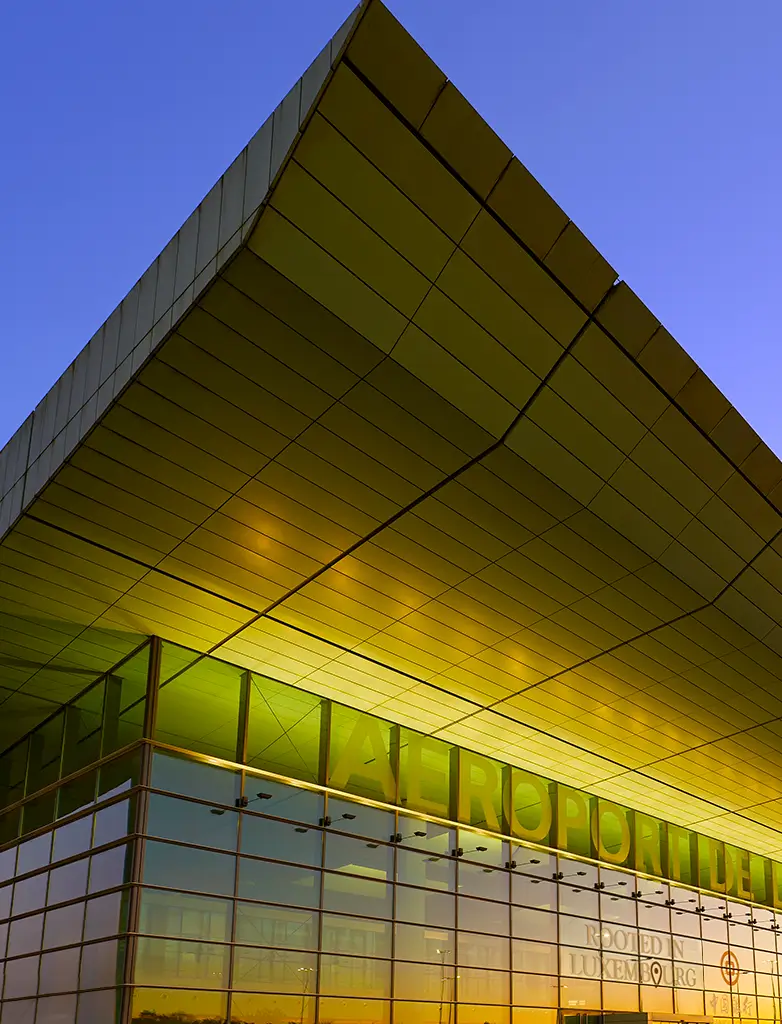
“My heart would briefly stop, then I’d collapse.”
Michael Agostini describes the terrifying symptoms that began in late 2022 with unsettling simplicity. At 35, the engineer and consultant had been healthy until these sudden collapses started disrupting his normal life. Two ambulance trips to A&E found nothing. It wasn’t until a cardiologist kept him for an entire afternoon of tests that the gravity of his situation became clear.
“He told me he didn’t quite understand the results he was seeing,” Michael recalls. The cardiologist sent the results to a specialised university clinic in Nancy. On Wednesday, they delivered the diagnosis. By Friday at 5:30pm, Michael was on the operating table.
“It’s important to focus on what’s essential in life. Even when we sometimes have phases where we’re in the hamster wheel, in everyday life trying to somehow master it… we sometimes also take time for reflection about the bigger picture. Where am I in my life? Where do I want to go? What are my possibilities? And what are my priorities?“
Conscious Through Crisis
The speed was dizzying, but the experience itself was traumatic. “You’re conscious when you have a pacemaker fitted,” Michael explains. Despite relaxants and local anaesthetic, he was aware throughout the hour-and-a-half procedure. “I was afraid of dying. During that time, I was in enormous pain. I had an extreme headache. I talked a lot with the people in the room to try to share how I was feeling, hoping to get reassurance that everything would be alright.”
Before the surgery, he’d spent sleepless nights in intensive care at the Centre Hospitalier de Luxembourg. “My pulse kept dropping below a certain threshold. Then the alarms would go off and I’d wake up again.” The monitoring equipment beeped constantly, blood pressure cuffs inflated every few minutes. When he emerged from a forty-minute MRI on Friday lunchtime, the doctor read him a report filled with technical terms. What Michael understood was clear: he needed a pacemaker. When he asked when, “he looked at his watch and told me it would be at half past five.”
Finding the Cause
The pacemaker solved the immediate crisis—Michael’s heart was beating properly again. But understanding why took months. “It was suspected, but to confirm that suspicion took from January through various tests until about June, when a biopsy could definitively prove it was sarcoidosis.”
Sarcoidosis is an autoimmune disease that can attack any organ. In Michael’s case, it had formed a small inflammation point in his heart’s electrical conduction system. “On one hand, that was a relief for me—knowing what it was and that we could do something about it. On the other hand, that was also the moment when I knew this was the actual reason I’d gone through all of that.”
He started oral medication, taking pills daily for about a year. Then the disease struck again. “This autoimmune disease can affect any organ at any time. It did that about a year ago when it attacked my kidneys.” His blood values deteriorated, extreme fatigue returned. Michael switched from daily pills to weekly self-administered injections, plus “a very strong cortisone treatment” that he gradually reduced over months. By early this year, his kidney function had normalised and he could stop the cortisone.
The Wider Impact
While Michael had medical support and psychological help—trauma therapy began even before his surgery—his family faced the crisis without such structured assistance. “The people around you, your immediate environment, they don’t necessarily have someone helping them cope with it,” he reflects.
His wife visited the hospital every day. “I said, ‘You must… I’m glad you’re here every day. I can’t imagine what it would be like if you weren’t here, because then I’d be sitting here alone all day on my phone, watching other people living their lives outside.'” He encouraged her to talk to others, to seek her own support.
His father’s response particularly moved him: “He asked himself the question: why him and not me? I think that’s very moving when you hear that.” Now a father himself, Michael understands the sentiment deeply. “I can’t imagine now what it would be like if my son had to go through something like this. Even just projecting myself into that role as a father with a child who has to go through such moments makes me very sad.”
Before and After
“There’s a before and an after,” Michael says of his near-death experience. “It was a moment that was a turning point for me, where I afterwards said, okay, what are the priorities in my life?”
That summer, he asked his girlfriend to marry him and told her he was ready to have children. Just over a year after his cardiac crisis, their son was born. “So today I’m living the life I envisioned during those difficult moments.”
The path to this new normal wasn’t immediate. “Your body has to adjust to having some device in your body and that it’s controlling your heart to a certain extent.” Rehabilitation meant learning to walk again, climb stairs, slowly building back to normal activities. Playing tennis and going to the gym took months to achieve.
Living with Sarcoidosis
Today, Michael’s life follows a careful rhythm of medical monitoring. Heart check-ups twice yearly, appointments with his internist every three months, blood tests every two months, annual visits to the pulmonologist, eye doctor, and dermatologist to check whether sarcoidosis has manifested elsewhere.
“My great hope is that if I continue this treatment through this year, hopefully—and this is my great hope—when I stop the treatment against the disease next year, that would be done.” His pacemaker, however, is permanent. The current device should last about eleven years before needing replacement. “My great hope is that technology will make some leaps forward by then.”
Travel requires small adjustments. “I don’t go through the metal detector gates at all,” he explains. While newer pacemakers can handle them, they use more power doing so. Instead, he carries a card certifying his pacemaker and receives individual security screening. “For me it takes one or two minutes until I’m patted down, but I wouldn’t describe that as a major intrusion into my life or personal freedoms.”
Looking Forward
Despite everything, Michael focuses on the future. The family has planned a trip to Sicily, specifically to Taormina. “That’s simply one of those places where I most love to be. There’s a kind of amphitheatre there where operas are performed. The backdrop you have from the amphitheatre—in the evening twilight you see the sea, and on the right side you see Mount Etna volcano steaming. That’s one of the most beautiful places I can imagine where one can travel.”
For Michael, sarcoidosis brought those priorities into sharp focus. The disease that stopped his heart also clarified what made it worth beating: family, connection, and the determination to live the life he’d envisioned during his darkest moments in intensive care. “I wouldn’t say that apart from the odd check-up you have to do with doctors, I wouldn’t say I’m impaired in any way or can’t do anything in life that I would have wanted to do.”
In Taormina’s amphitheatre, watching opera as the sun sets over the sea and Mount Etna steams in the distance, Michael will be living proof that even when your heart stops, life doesn’t have to.



